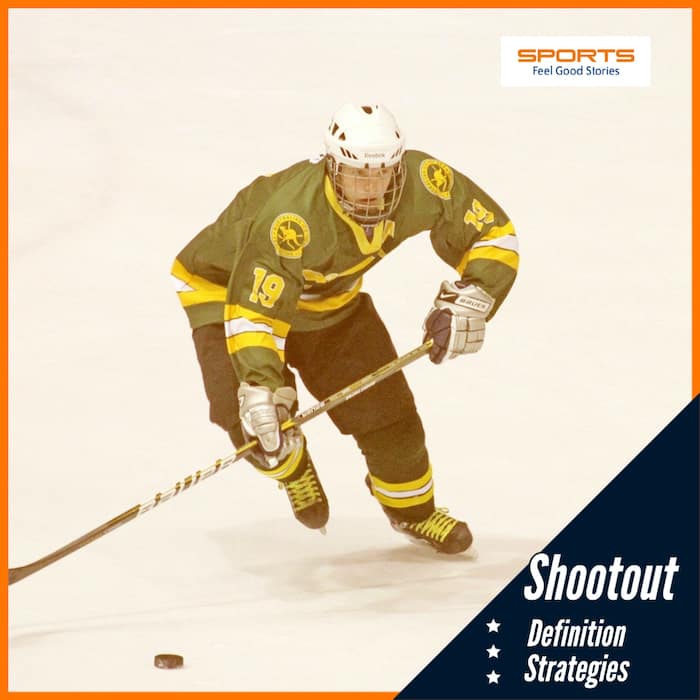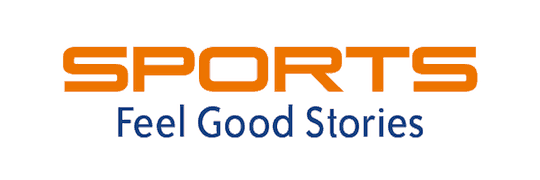A shootout in hockey always makes me nervous. If truth be told, it’s not my favorite way to decide a game. After all that hard work each team put into the game, I always think they have to go to a shootout? But alas, it is not up to me. Let’s see what all this shootout business entails, shall we?
Shootout Definition
What is a shootout in hockey? When a game is still tied after overtime, five minutes, it goes to a shootout. This involves three hand-picked players from each team to alternate penalty shots at the opposing team’s goalie. The team with the most goals wins. If it is still a tie after the initial three, they continue with sudden death penalty shots, alternately, until a goal is scored.
Key Terms About Shootouts
A shootout occurs when there is a tie at the end of overtime.
A coach will choose three players from the team to take a penalty shot on the other team’s goalie.
If after the six shots there is still no winner, they will continue in sudden death penalty shots.

When Did the NHL Adapt the Shootout Round?
Before we had shootouts in the regular season play, two teams could tie. For each win, a team earned two points. A tie was one, and a loss, zero. In the 2005-06 season, the NHL decided to avoid the tie and introduced the shootout round. The team will still receive one point, however, if that team loses in a shootout.
Before, however, the shootout occurs, the teams will first go to overtime. Overtime consists of five extra minutes of gameplay. When first introduced, it was a 5-on-5, then 4-on-4, and lastly, in June of 2015, the NHL decided to adapt to having 3-on-3 players.
The reason for this change was to hopefully allow more goals to be scored and allow for more space on the ice. If you have ever watched over time, you will notice it is a much faster pace with many turnovers. The hope is, through this, there is less chance of having a shootout round. As a special note, playoffs don’t have shootouts; they play until someone scores a goal.
See Pulling the Goalie Definition and Benefits.
How A Shootout Works
First, who gets to take the initial penalty shot? The home team gets to decide that. Next, the coach will select his best three picks to take the shot. At this point, he will also have in his mind who the next ones will be in case the result after the first three is still a tie.
Each goalie will defend the net that they were last defending in period three. Each penalty shooter will commence at center ice. After the initial penalty shooter, the teams alternate taking shots on the goalies. The shooter must pass the blue line of the offensive zone before taking his shot.
It is also necessary that the shooter keep moving the puck forward. The shooters can, as in my house, we like to call it, dipsy doodle all over the ice as long as they want, so long as they keep the puck moving forward.
I have noticed that usually, the shooters that choose to dipsy doodle are the ones that miss the net or shoot directly at the goalie, but maybe that’s just me? As the shooter is only allowed one shot, that is, no rebounds, he must make the best of it.
See How Long Is A Hockey Game?
Winning a Shootout
Ultimately, the team that comes away with the two points is the team that wins the best out of three. If it is still tied after three shots per team, they will continue until a goal is scored. So, let’s say that the Minnesota Wild is up against the Vegas Golden Knights. If Minnesota scores, the Knights will have one more chance to score and tie it up. If not, Minnesota wins the game.
I selected the video below to not only show you how a shootout works but also because it went well beyond the first three shots from each team. You will also notice that each X stands for a miss, and a dot stands for a goal.
Longest Shootout in the NHL Video
Now, after you’ve watched it, I’d like to add that it was not only exciting to see but crazy how each time a goal was scored, another goal kept tying it up. It took a total of 20 rounds, obviously unusual considering that they ran out of space in the top goal tracker.
Shootout Strategy
You may be wondering if players have a plan or strategy before they take their penalty shot. Well, in any sport, there is always some strategy, right? The majority of players will try and deke out the goalie. This strategy can be quite effective for a shootout in hockey.
Goalies are always trying to read the puck, but if a player can make them think they are going left, and then they shoot right, they stand a good chance of scoring. Each shooter needs to go in with confidence, which typically involves going straight in with your head up.
As I previously mentioned, when they skate all over the ice, it can be a sign of hesitation and uncertainty. One technique that isn’t seen that often but happens from time to time is the slapshot penalty shot. Check out the video below to see some great examples.
Slapshots in Shootouts Video
And don’t think that the shooters are the only ones with a strategy behind their movements. Goalies have some too. They may try and bait a shooter into thinking they have an opening on one side only to block their shot with a quick movement of their body.
Also, the coaches of goalies help them review shootout possibilities. Before a game, they may go over key penalty shooter’s shots in previous games. By doing this, they can help prepare them for what to expect. Some players tend to repeat the same move, and this can sometimes give them an edge.
Final Thoughts
While I may not agree with having a shootout decide the fate of whether or not my team wins, I can appreciate not having to stay up late watching endless periods of hockey. After all, that’s what playoffs are for. And I will say this. They do add excitement as I half cover my eyes, watching whether or not my goalie will save the puck.

By Danielle L’Ami
Danielle is a Canadian writer who lives outside of Toronto but is a proud Montreal Canadiens fan. She believes that Saturday nights are best filled with hockey and lots of cheering.
Overtime
You are on our What is a Shootout in Hockey page.
You might like:
